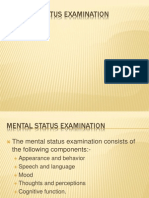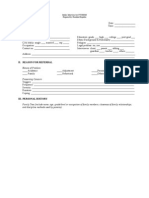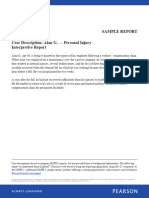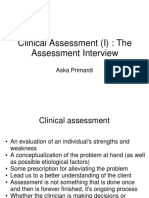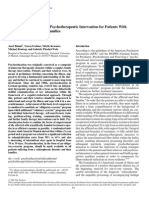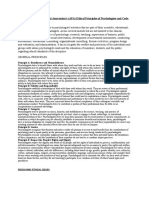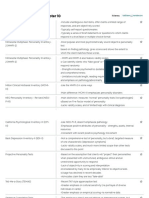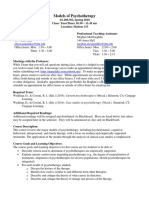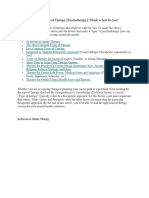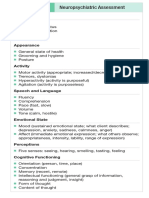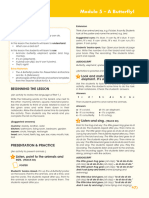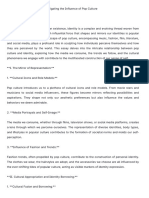0% found this document useful (0 votes)
563 views7 pagesWritten Report Clinical Interview
The document discusses key aspects of conducting clinical interviews, including reliability, validity, clinical utility, interviewer skills, specific behaviors, cultural issues, and components of the interview. Specifically, it covers:
1) The importance of an interview being reliable, valid, and clinically useful.
2) General skills for interviewers like being self-aware, developing rapport, and active listening skills.
3) Specific interviewer behaviors such as eye contact, body language, vocal tone and verbal tracking.
4) How to be aware of cultural differences in communication styles and physical proximity.
5) Components of an effective interview including building rapport, using a mix of directive and nondirective questioning, and eliciting open
Uploaded by
DhuffOrtizCopyright
© © All Rights Reserved
We take content rights seriously. If you suspect this is your content, claim it here.
Available Formats
Download as DOCX, PDF, TXT or read online on Scribd
0% found this document useful (0 votes)
563 views7 pagesWritten Report Clinical Interview
The document discusses key aspects of conducting clinical interviews, including reliability, validity, clinical utility, interviewer skills, specific behaviors, cultural issues, and components of the interview. Specifically, it covers:
1) The importance of an interview being reliable, valid, and clinically useful.
2) General skills for interviewers like being self-aware, developing rapport, and active listening skills.
3) Specific interviewer behaviors such as eye contact, body language, vocal tone and verbal tracking.
4) How to be aware of cultural differences in communication styles and physical proximity.
5) Components of an effective interview including building rapport, using a mix of directive and nondirective questioning, and eliciting open
Uploaded by
DhuffOrtizCopyright
© © All Rights Reserved
We take content rights seriously. If you suspect this is your content, claim it here.
Available Formats
Download as DOCX, PDF, TXT or read online on Scribd
/ 7







